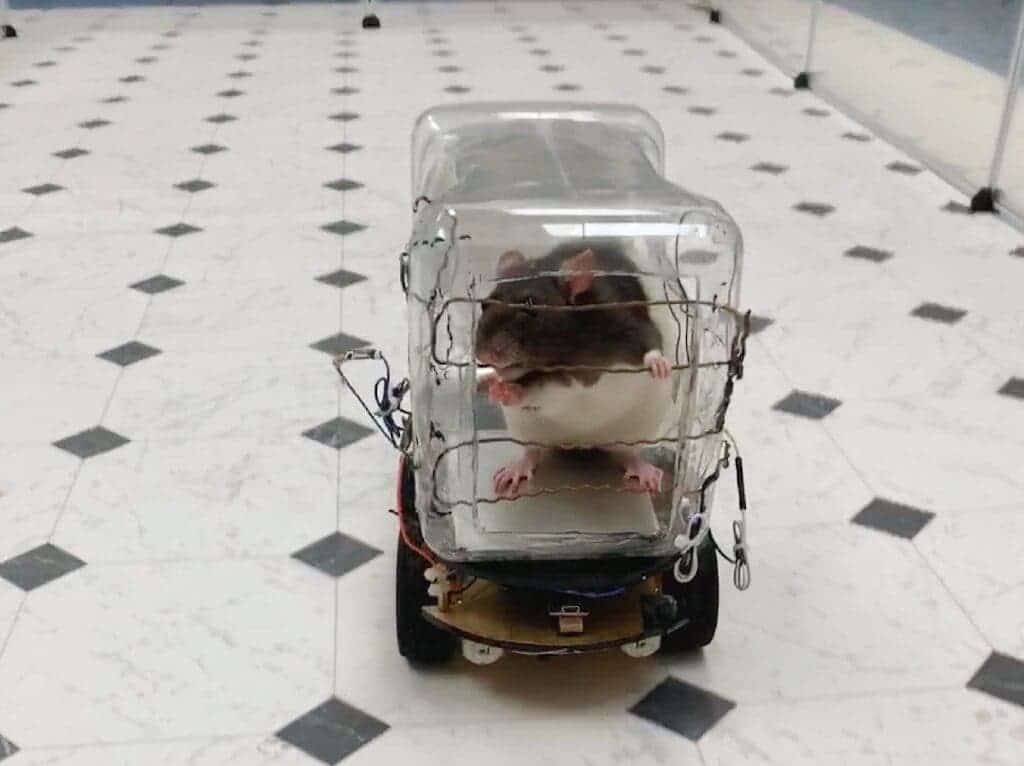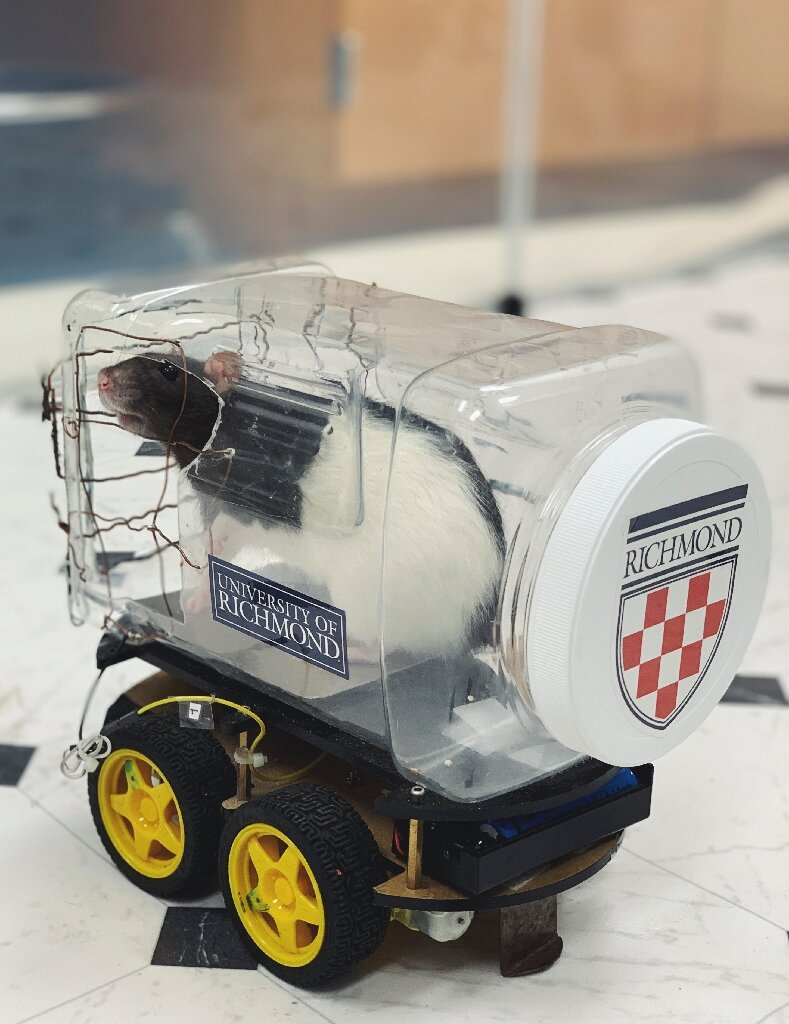Unlike most of us, rats seem to find driving relaxing.

Image credits University of Richmond.
A team of U.S. scientists reports training a group of rats to drive tiny vehicles around in exchange for treats (Froot Loops cereal). The team found hormonal cues suggesting that the animals found driving around to be relaxing, maybe even fun and enjoyable.
The findings help showcase how even simpler brains can handle sophisticated behavior and may help inspire new treatment options for certain mental illnesses.
Rat racers
The team wanted to explore the process of neuroplasticity — the property of the brain to change in response to experience — and was particularly interested in understanding how rats housed in more natural settings perform against lab rats.
Led by senior author Kelly Lambert (University of Richmond), the team took a robot car kit, added a clear plastic food container as the driver’s compartment, and fixed an aluminum plate under that. To complete the car, a copper wire was threaded horizontally across the cab to form a left, center, and right bar.

When a rat moved onto the aluminum floor and touched one of the wires, it would close the circuit and drive the car in the selected direction. With repetition, they learned how to drive forward and steer in more complex patterns. Seventeen rats were trained over several months to drive around an arena 150 centimeters by 60 centimeters.
All in all, the team reports that rats kept in more natural (‘enriched’) environments performed better than their lab-kept counterparts. However, Lambert herself says it “it was actually quite shocking to me that they were so much better”. In order to get a better idea of what the rats were experiencing, the team collected feces samples after the trials and tested them for corticosterone and dehydroepiandrosterone content (hormones that cause or counter stress).
All of the rats in the trial had higher levels of dehydroepiandrosterone, indicating a more relaxed state. The team says this is likely the same satisfaction we feel when we master a skill or task, known as “self-efficacy” or “agency” in humans. Furthermore, the rats that did drive showed even higher levels of dehydroepiandrosterone than those who were just passengers in a human-controlled vehicle.
While definitely cute, the study does help us better understand how rats, who are a key animal model, handle tasks and how their brains change following them. Better understanding their brains will help us better understand our own, Lambert says, and could point the way towards better treatments for mental health conditions.
“There’s no cure for schizophrenia or depression,” she said. “And we need to catch up, and I think we need to look at different animal models and different types of tasks and really respect that behavior can change our neurochemistry.”









